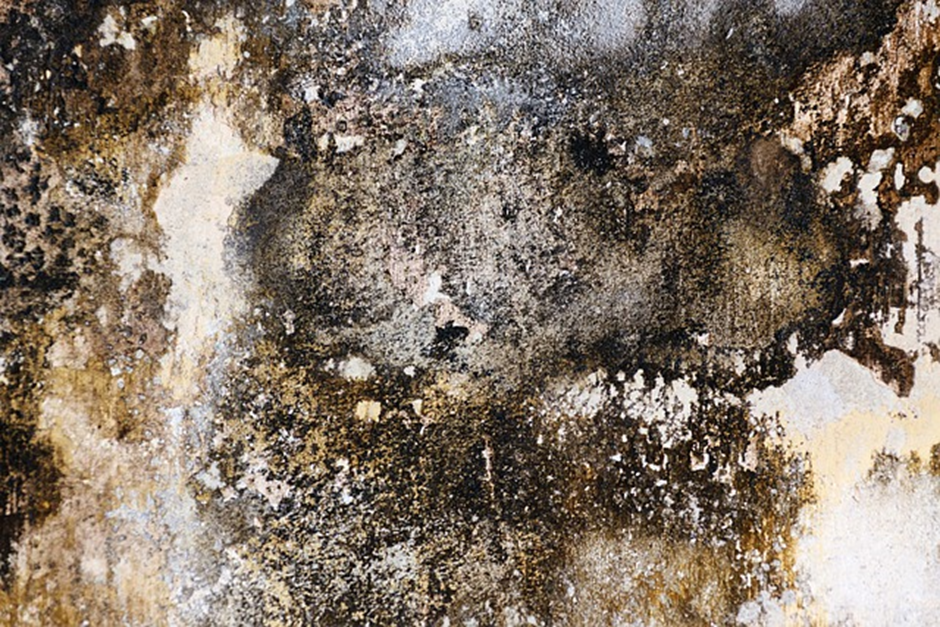
Black Spots on the Wall
Black spots on the wall indicate black mold. This mold can form especially when the walls are slightly damp. It also affects areas like window joints, window areas, or entire bathroom walls. It could be a specific type of fungus: Aspergillus niger. However, other types of fungi may also be present, and only a certified mold expert can provide a proper diagnosis.
Causes of Black Mold Formation
Mold develops in poorly ventilated rooms with damp walls. This happens more often than one might think because even improper ventilation can cause moisture on walls. If the wall temperature is much lower than the air temperature, condensation forms on the walls. The wall becomes damp, leading to wall mold. This process occurs when cold basement rooms are ventilated during a hot summer. Although opening the windows wide seems like a good idea, it can result in the opposite of the intended effect.
Other causes of mold growth can include the following factors:
- Poor thermal insulation
- Infrequent ventilation of living spaces
- Moisture in the masonry itself
- Improper renovations (such as new, tightly sealed windows and doors)
- Inappropriate plaster and paint finishes (e.g., dispersion paint)
- Leaky basement walls or floors
- An unnoticed water leak
Risks Associated with Mold
The spores of black mold are invisible to the human eye. In low concentrations, there is little health risk, but the level at which symptoms may arise can quickly be exceeded. Symptoms such as headaches, joint pain, respiratory problems, burning eyes, allergies, skin conditions, general malaise, or sleep disturbances may be caused by the mold.
Not only humans but also buildings are at risk. Mold can damage the building by weakening its structural components, potentially compromising the building's load-bearing capacity.
What to Do When You See Black Spots on the Wall?
First, pay attention to the spots. If they are relatively small, you can tackle the mold with natural home remedies such as 70% ethyl alcohol. Spirits, chlorine, or hydrogen peroxide can also be used. Wearing a protective mask and gloves is recommended during the process, as mold spores can be inhaled. Afterward, closely monitor the small spot. Is there any change?
The Entire Wall Has Black Spots
If the mold on the wall is larger, it is advisable to consult an expert. A professional intervention and disposal are required, and the mold will be accurately identified, with water analyses possibly being conducted. Removal may involve chiseling off the plaster and applying a breathable plaster capable of absorbing some moisture. In some cases, basement drainage may be necessary.
Have Black Spots on the Wall Analyzed by a Professional
It’s essential to have the spots on the wall analyzed. Reliable self-tests are available that include detailed instructions for use and evaluation. Self-tests can offer quick insights.
Detailed professional analysesare carried out in accredited laboratories, which not only determine the concentration of the mold but also identify the mold species.
Conclusion
Black spots on the wall indicate a more significant issue within the house, but it's not the end of the world. Action must be taken, much like treating a person's symptoms of illness. The black spots are more of a symptom that manifests, not the underlying cause itself. The root cause must be identified. If you're unsure what the problem might be, it's always best to consult a mold expert who can identify the cause and provide good advice.
If left untreated, the problem will likely worsen over time and will not go away on its own. Therefore, quick and careful action without panic is the best approach.
✔ Comprehensive information brochure
✔ Test up to 10 rooms
✔ Analysis of mold genus
✔ Analysis of contamination level
✔ Surface mould test
✔ 10 different mould types
✔ Mould alarm display
✔ Clear display
✔ For joints and tiles
✔ For the removal of mould





